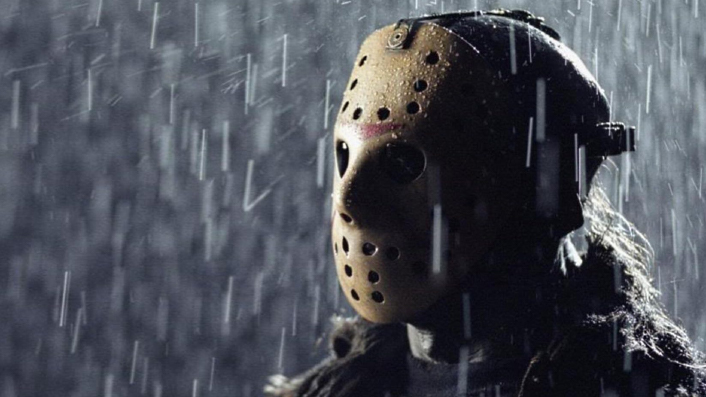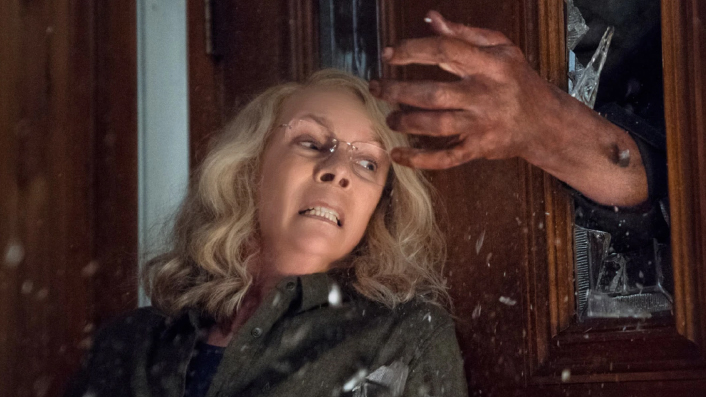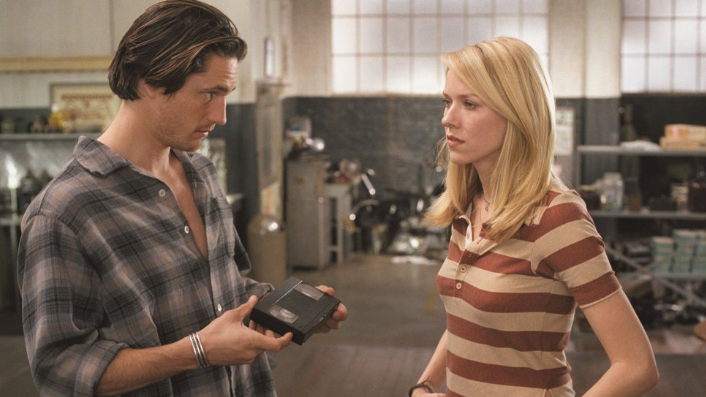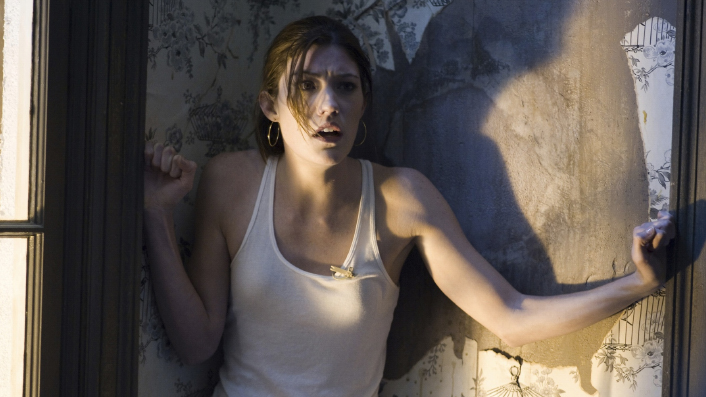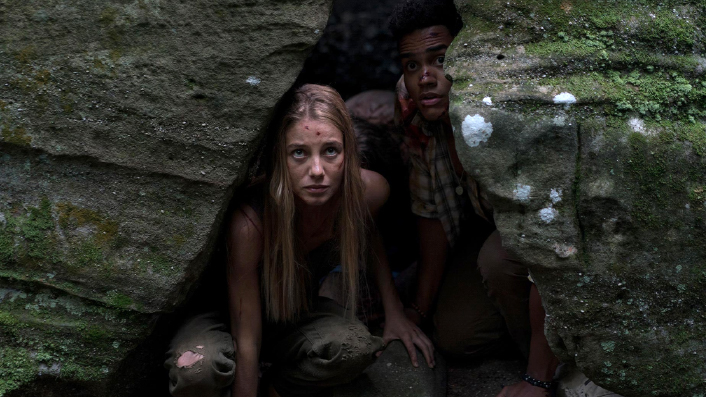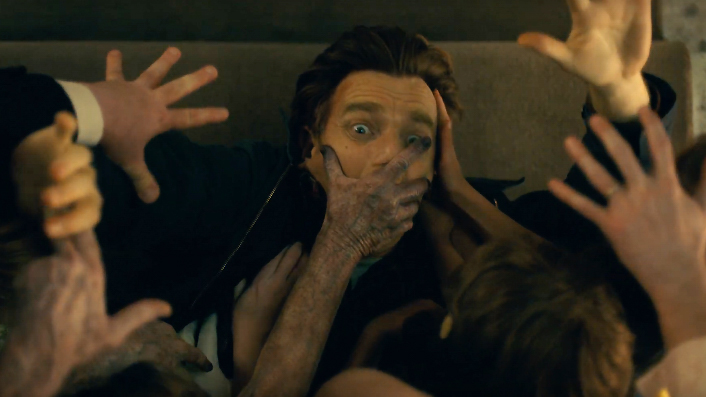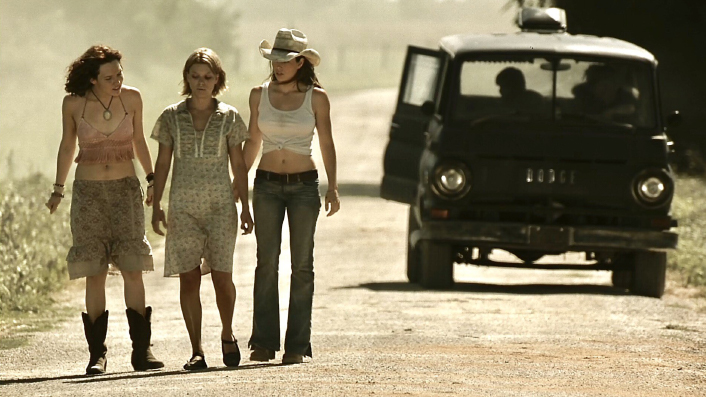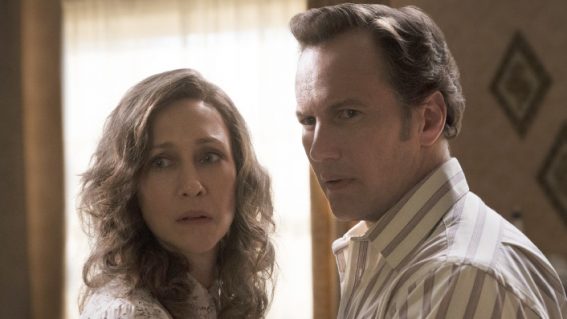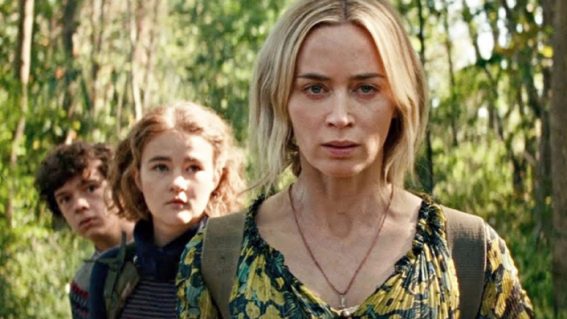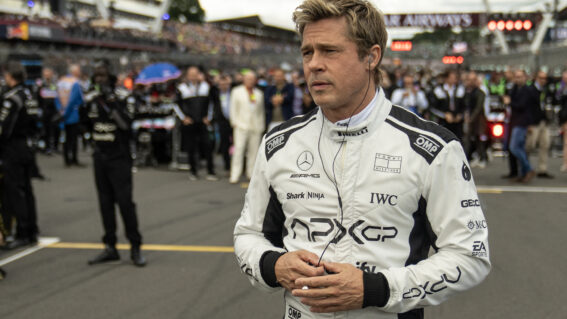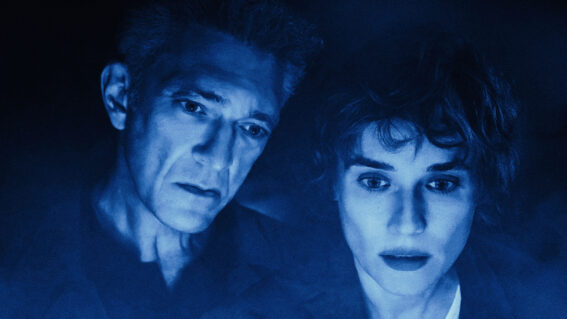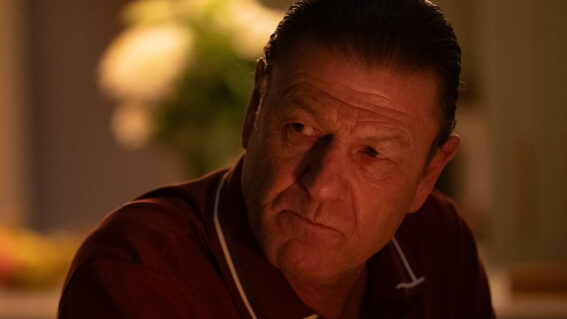Spiral: From the Book of Saw is the latest in a long line of horror franchise reinventions
We examine the best and worst examples of horror franchise reinvention and rebooting.
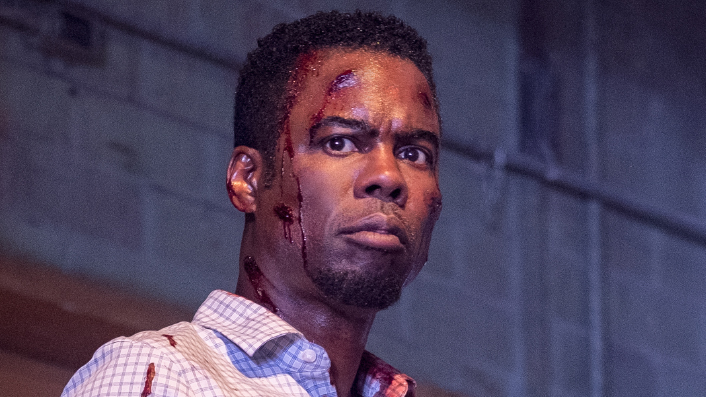
Spiral: From the Book of Saw arrives in cinemas Thursday May 13, a surprising pivot even in a genre full of mid-franchise reinventions and reboots. Tony Stamp examines some of horror’s best and worst examples.
Way back in the before times (2019), horror fans received a surprising bit of news: the Saw franchise would be lurching back to life (with a new name: Spiral: From the Book of Saw), despite being declared DOA two years prior.
See also:
* Movies now playing in cinemas
* All new streaming movies & series
Even more surprising: the series was being reanimated by none other than beloved comedian Chris Rock. At the time Lionsgate’s Joe Drake said “When Chris Rock came to us and described in chilling detail his fantastic vision that reimagines and spins off the world of the notorious Jigsaw Killer, we were all in”. Jaws dropped, and gorehounds braced themselves for another onslaught of fiendish traps and self-surgery.
Saw was a phenomenon, launching in 2003 and setting its writer Leigh Whannell and director James Wan on the path to Hollywood success. The franchise ran for eight films in total, writing itself into several corners and figuring its way out of them, but even input from talented directors like The Spierig Brothers couldn’t stop the sense of diminishing returns.
It sounds like Rock felt the same way, and despite the return of director Darren Lynn Bousman (he helmed the second third and fourth entries), the filmmakers have promised an entry that goes back to the first film’s stripped-back approach: a bit less gore, a bit more story.

While we wait to witness the unholy results of this unlikely partnership, let’s cast our minds back to some other long-running series that attempted to reinvent, reimagine, or reboot themselves, and lay down a verdict on the results.
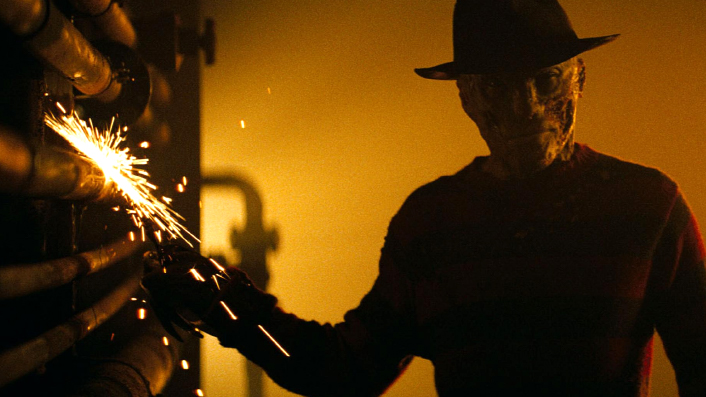
A Nightmare on Elm Street (2010)
GOOD OR BAD? Bad.
For most of the 1980s, Freddy Krueger WAS Robert Englund. Not just because they shared a face (although that’s important, what with Freddy being a rare non-masked slasher), but because Englund owned the character, playing him in eight movies and the spinoff TV show Freddy’s Nightmares.
When New Line Cinema decided to reinvent the franchise in 2010, Jackie Earle Haley was cast, and you know what? That’s a pretty great choice. He can radiate untold menace when he wants to, and can push his voice down to Englund-esque levels of gravel.
What’s NOT so great was the filmmakers’ decision to lean into an element of the original 1984 script that was pared down to an implication in the finished product: the idea that Freddy is a child molester. It’s a colossally wrong-headed choice; far too heavy for a movie about a demon-man who invades your dreams. I suspect this one decision killed the franchise (until the next time they try to reboot it).
BEST SCARE: Someone is in bed when suddenly gravity stops working. It was done better in the original, but still.
Friday the 13th (2009)
GOOD OR BAD? Good.
In 2009 a similarly failed attempt was made to resuscitate the Friday the 13th series. Throughout the original films Jason Vorhees is pretty malleable, face-wise, so all that’s needed to play him is a hulking physique. Mountain-man Derek Mears strapped on the hockey mask and got to killin’ a new batch of horny teens, and all things considered, it was pretty great! It’s a simple formula after all, and this effort got the tone pretty bang on, keeping the kills suitably brutal but remembering that this should be a fun experience for viewers.
In its efforts to emulate the more sex-shamey moments of the original series this one does barrel into some shameless objectification of its female cast, but aside from that doesn’t wallow in the muck too long, ramping up to a surprisingly thrilling underground climax.
BEST SCARE: The spear gun through the dock.
Halloween (2018)
GOOD OR BAD? Good.
The unlikely pairing of director David Gordon Green and writer Danny McBride took the reins for this kinda-sequel/kinda-reboot in 2018. It was a surprising choice—the former was known for helming critically beloved fare like All the Real Girls, before pivoting into comedy (including Eastbound and Down, the foul-mouthed HBO show where McBride made his name).
And it worked! Again, tone is everything and these guys managed to emulate at least some of the original’s magic, particularly during those long takes that snake behind Michael Myers as he stalks through suburbia.
They lean into the gore way more than John Carpenter did, which leads to some fuzzy logic (like how and why did Myers turn a man’s head into a jack-o-lantern), but mostly this was good enough to wipe Rob Zombie’s attempts at turning Myers into a sympathetic character [sigh] from the public consciousness.
BEST SCARE: The teeth over the bathroom stall.
The Ring (2002)
GOOD OR BAD? Good.
To be clear, Gore Verbinski’s version of The Ring would be nothing without its Japanese forebear. Hideo Nakata’s 1998 original is a masterpiece of dread, including the iconic shot of Samara emerging from a TV. It introduced the wider world to the Japanese ghost aesthetic and prompted a number of imitators involving spooky girls with dank hair over their faces.
Verbinski could never recreate the shock of seeing that TV scene for the first time, but he works overtime to make this a chilling effort in its own right (and threads through an involving mystery). In fact, it’s been whispered for years that maybe this is the superior version?
BEST SCARE: The glimpse of the body in the closet.
Quarantine (2008)
GOOD OR BAD? Bad.
2007’s Spanish film [REC] didn’t exactly reinvent the wheel for found-footage horror, but it did borrow the Blair Witch formula and give it a good kick up the backside. Less concerned with verisimilitude than delivering scene after scene of pulse-pounding zombie action, it features several of the genre’s greatest scares, including its skin-crawling final scene. The 2008 remake isn’t terrible, but it’s an unnecessary carbon copy of the original that doesn’t bring much new to the table.
BEST SCARE: The attic.
Wrong Turn (2021)
GOOD OR BAD? Good.
I have a soft spot for 2007’s Wrong Turn 2, an underseen gonzo effort that takes the first entry’s hillbilly horror and ramps up its absurdity, from a first scene featuring an actual American Idol contestant playing herself (and getting bisected pre-credits) to Henry Rollins wisecracking while blowing up backwoods mutants. The franchise limped on for four more instalments, before an unexpected reboot in 2021.
This version does away with any sort of mutation, instead focusing on a society of forest dwellers who shun the outside world, enforcing their own archaic laws. It’s a dour movie that wants to traumatise its audience, and features some extremely icky moral grey areas, but it’s compelling for the attempt to forge its own ground. I still think the original two films are superior, but this is good too.
BEST SCARE: A very big log.
Doctor Sleep (2019)
GOOD OR BAD? Good.
Mike Flanagan adapted Stephen King’s follow-up to The Shining, weaved in elements of the first book that Kubrick’s film neglected, AND made this a sequel to the 1980 movie… sort of. That confusion ends up being the best thing about it: in a film concerned with absent fathers, it seems appropriate to have someone playing Jack Nicholson playing Jack Torrance, as King and Kubrick’s shadows loom over the younger filmmaker. Flanagan was never going to top Kubrick, but he fearlessly made his own thing, commenting on his predecessors along the way.
BEST SCARE: Casting Jacob Tremblay is not just a genius red herring (SPOILER: he dies almost immediately), but the kid is not playing! He brings all of his considerable chops to his death scene, and as a result, it’s truly upsetting.
The Texas Chainsaw Massacre (multiple)
GOOD OR BAD? Bad. All bad.
There have been so many attempts to reboot this thing I’ve lost count. They’re all bad. The original rules, and is a classic for good reason, and I’d argue that Tobe Hooper reinvented the franchise with aplomb in his 1986 sequel, moving from ’70s paranoia to ’80s excess with gleeful abandon. But yeah, forget the rest.
BEST SCARE: Who cares.

Hellraiser: Judgement (2018)
GOOD OR BAD? Bad.
In 2018 Gary J. Tunnicliffe, who’d worked on makeup effects for the Hellraiser series from the third installment onwards, had a pop at directing one. I guess this is technically a sequel in Clive Barker’s iconic mythos, but it replaces Doug Bradley with Paul T Taylor as chief Cenobite Pinhead and really has its own thing going on.
The movie starts with one of the most bizarre scenes I’ve ever witnessed, a burst of low-budget imagination featuring blood, children’s tears (bottled), puke, skin peeling, more blood, a baby-face hunchback who has a little guy with scythe-hands inside him, etc. Too bad then that the rest of the movie is such a dirge, limping through boring exposition with nary a fright to be had.
BEST SCARE: Seriously WTF is happening in that opening scene.
The Invisible Man (2020)
GOOD OR BAD? Good.
For yonks Universal has been trying to figure out how to relaunch its classic monsters—prior to this was Tom Cruise’s 2017 version of The Mummy, and they had Bride of Frankenstein and a different Invisible Man all set to go before the Dark Universe ceased to be. The dust had barely settled when Saw writer Leigh Whannell (fresh off his slim-budgeted triumph Upgrade) wrote and directed this fresh take on H.G Wells’ 1897 novel.
It’s a thoroughly entertaining crowd-pleaser, whipping between a series of nerve-shredding set pieces, but remembers to take its central theme of spousal abuse very seriously, which adds real weight to proceedings (having Elizabeth Moss in the lead doesn’t hurt either).
BEST SCARE: The restaurant scene.





